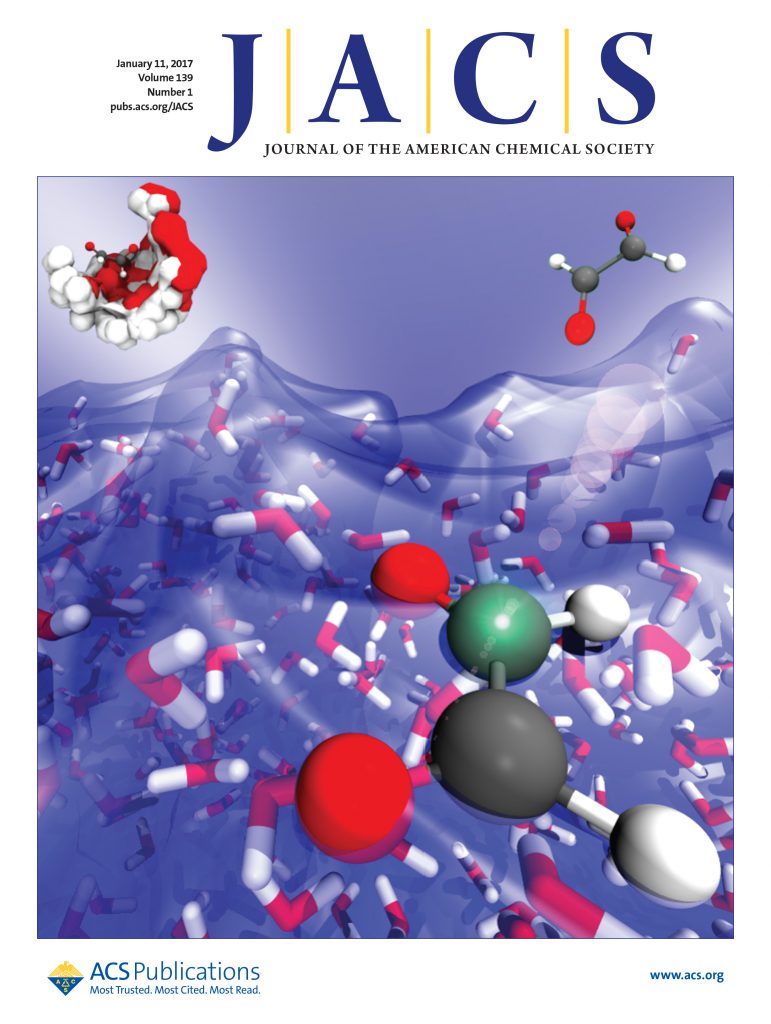弯曲WS2上的应变工程Rh单原子制氢和耦合光化学水裂解。
IF 15.6
1区 化学
Q1 CHEMISTRY, MULTIDISCIPLINARY
引用次数: 0
摘要
氢是一种很有前途的清洁能源载体,但水电解的高能耗限制了它的广泛应用。催化是提高制氢效率和降低能源成本的关键。然而,以d波段理论为指导的传统催化剂设计在预测吸附行为方面存在不一致性,析氧反应(OER)仍然是主要的效率瓶颈。为了解决这些挑战,我们开发了一种应变工程Rh单原子催化剂,锚定在碳纳米管支撑的弯曲WS2上(RhSA/WS2@CNT)来调节电子结构。所得催化剂在10 mA cm-2下实现了超低过电位17.4 mV的析氢反应(HER),质量活性比商用Pt/C高65倍。机理分析表明,H*吸附趋势与d波段理论预测相矛盾,但可以用轨道对称适应来解释,其中应变调制的dxz轨道在控制吸附能量学中起主要作用。除了催化剂设计之外,HER催化剂还与光催化碘化物氧化反应(IOR)耦合,以取代OER,并将水分解电压降低到0.7 V。本研究不仅介绍了一种优化单原子催化剂的应变工程策略,而且还展示了一种提高能源效率的耦合光电系统,为可持续制氢提供了另一种方法。本文章由计算机程序翻译,如有差异,请以英文原文为准。
Strain-Engineered Rh Single Atoms on Curved WS2 for Hydrogen Production and Coupled Photochemical Water Splitting.
Hydrogen is a promising clean energy carrier, yet the high energy demand of water electrolysis limits its widespread adoption. Catalysis is crucial to enhance the efficiency of hydrogen production and lower energy costs. However, conventional catalyst design guided by the d-band theory faces inconsistencies in predicting adsorption behavior, and the oxygen evolution reaction (OER) remains a major efficiency bottleneck. To address these challenges, we developed a strain-engineered Rh single-atom catalyst anchored on curved WS2 supported by carbon nanotubes (RhSA/WS2@CNT) to modulate the electronic structure. The resultant catalyst achieves an ultralow overpotential of 17.4 mV at 10 mA cm-2 for the hydrogen evolution reaction (HER) and a mass activity ∼65 times higher than that of commercial Pt/C. Mechanistic analysis reveals that the H* adsorption trend contradicts d-band theory predictions but is explained by orbital symmetry adaptation, where the strain-modulated dxz orbital plays a major role in governing adsorption energetics. Beyond catalyst design, the HER catalyst was coupled with a photocatalytic iodide oxidation reaction (IOR) to replace the OER and reduce the water-splitting voltage to 0.7 V. This study not only introduces a strain-engineering strategy to optimize single-atom catalysts but also demonstrates a coupled electro-photo system that enhances energy efficiency, offering an alternative approach for sustainable hydrogen production.
求助全文
通过发布文献求助,成功后即可免费获取论文全文。
去求助
来源期刊
CiteScore
24.40
自引率
6.00%
发文量
2398
审稿时长
1.6 months
期刊介绍:
The flagship journal of the American Chemical Society, known as the Journal of the American Chemical Society (JACS), has been a prestigious publication since its establishment in 1879. It holds a preeminent position in the field of chemistry and related interdisciplinary sciences. JACS is committed to disseminating cutting-edge research papers, covering a wide range of topics, and encompasses approximately 19,000 pages of Articles, Communications, and Perspectives annually. With a weekly publication frequency, JACS plays a vital role in advancing the field of chemistry by providing essential research.

 求助内容:
求助内容: 应助结果提醒方式:
应助结果提醒方式:


